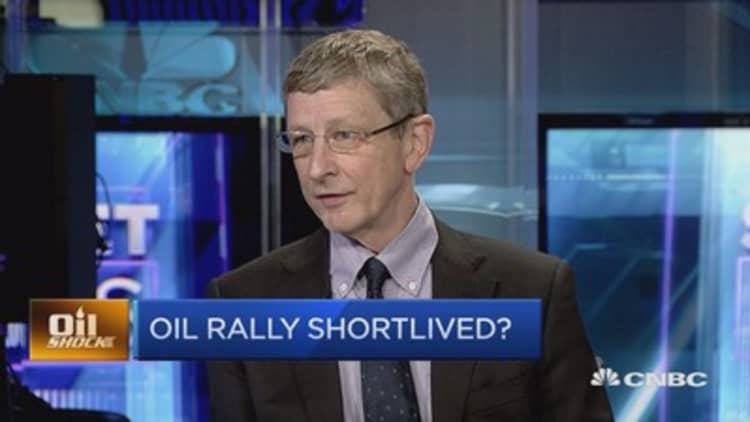U.S. crude prices ended the month nearly 8 percent higher, supported in the final week of September by planned OPEC output cuts, but profit-taking after a two-day rally capped gains for benchmark crude on Friday.
U.S. West Texas Intermediate crude futures settled up up 41 cents at $48.24 a barrel. Global benchmark Brent crude futures were down 19 cents at $49.05 a barrel by 2:36 p.m. ET (1829 GMT).
On a weekly basis, WTI had climbed about 8.5 percent, while Brent was up nearly 7 percent from last Friday's close. For the third quarter, U.S. crude was roughly flat.
Also on Friday, the U.S. oil rig count rose by 7 to a total of 425, marking the 13th time in the last 14 weeks the tally has ticked up, oilfield services firm Baker Hughes reported. At this time last year, U.S. drillers were operating 614 oil rigs.
U.S. drillers in the third quarter added 95 oil rigs, the greatest increase in any quarter since 2014, but the pace of additions has slowed as crude holds below $50 a barrel despite OPEC's first plan in eight years to cut output.

While profit-taking weighed on Brent and WTI for the day, the market's downside was also limited by a rise in Wall Street shares and drop in the dollar after weak U.S. consumer spending data suggested the Federal Reserve might be cautious in raising interest rates in the near term.
"We're seeing some profit-taking because it is a long time until the next OPEC meeting in November when individual quotas have to follow," said Frank Klumpp, oil analyst at Stuttgart-based Landesbank Baden-Wuerttemberg.
The Organization of the Petroleum Exporting Countries (OPEC) agreed on Wednesday to cut output to 32.5-33.0 million barrels per day (bpd) from around 33.5 million bpd, estimated by Reuters to be the output level in August.
The details, including the quotas for each member and the implementation data, will be finalized at OPEC's policy meeting in November.
"The group surprised us in Algiers and we cannot rule out that they will surprise us again," said analysts at BMI Research.
"However, we maintain our view that a collective cut will have little impact on a fundamental level."

A persistent oil supply glut brought prices from mid-2014 highs above $100 a barrel to below $50 today, prompting the oil producers' group to find agreement on limiting output.
Russia, not an OPEC member but a large producer currently pumping crude at record high levels, said it would find a way to freeze production if the country reaches an agreement with OPEC members.
The United States said it had little faith in the deal leading to higher prices in the long term.
Amos Hochstein, the U.S. energy envoy, said in a Reuters interview the deal will either lead to higher U.S. production and trigger another price fall or allow U.S. producers to expand market share.
Investors are bracing for further oil price swings ahead of the November meeting.
"We are likely to see some volatility going into November's meeting," said Jade Fu, investment manager at Heartwood Investment Management.
"We continue to maintain reasonable exposure to energy through commodity-related sectors, such as U.S. high yield and private equity."
— CNBC's Tom DiChristopher contributed to this report.

